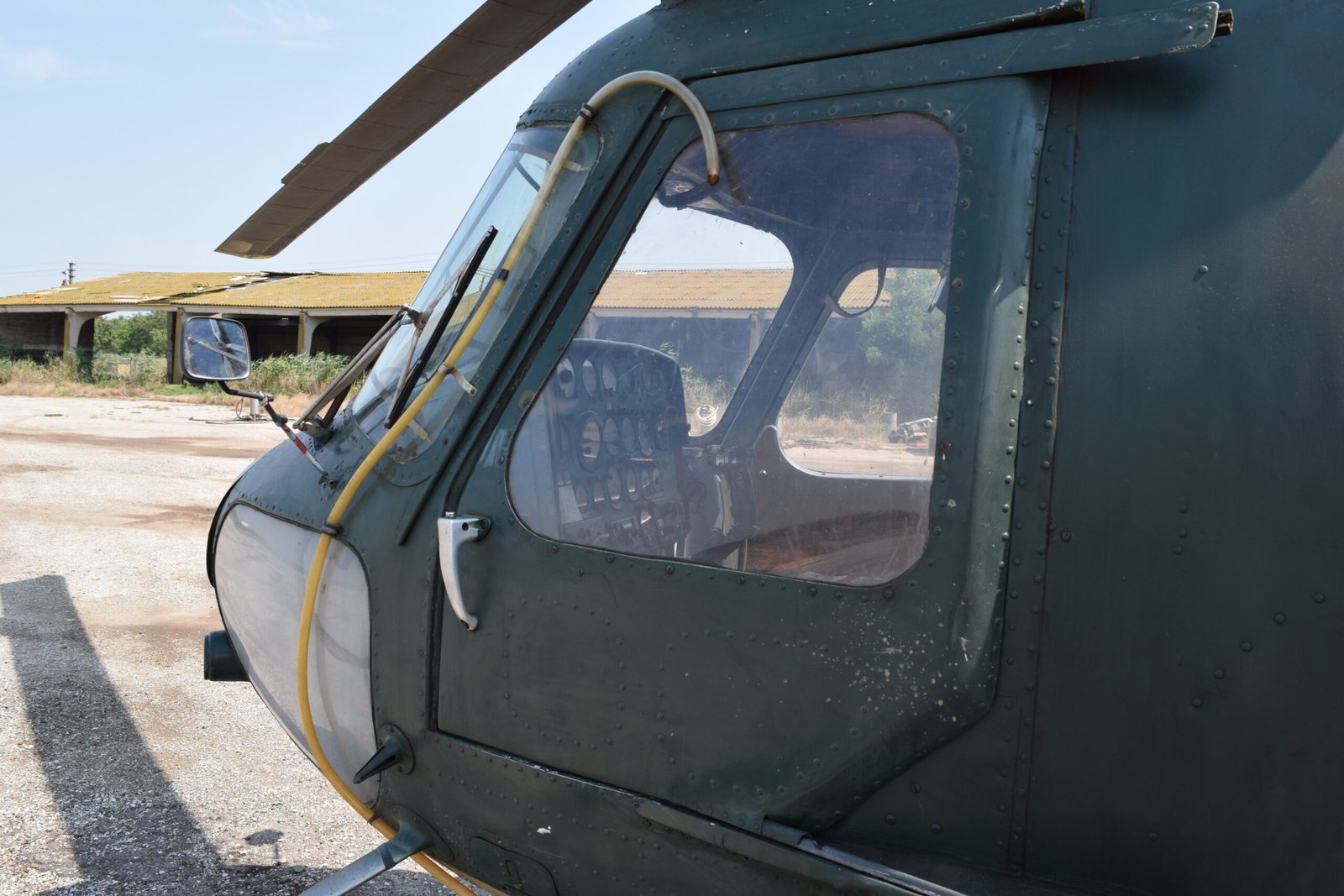aviation technology
From Runways to Skyways: The Impact of Airport Infrastructure on Global Travel
In today’s interconnected world, the aviation industry stands as a vital pillar of global travel. Behind the scenes, robust airport infrastructure plays a crucial role in ensuring that we can traverse continents within hours. But the story does not end with runways and terminals; it extends into technology training, online resources, and even the burgeoning field of drones. Let’s explore how these elements intertwine to shape modern travel.
At the heart of aviation’s evolution lies technology training. Modern pilots undergo rigorous simulations that replicate real-world flying scenarios without ever leaving the ground. Flight simulators are not just toys for aspiring aviators; they’re sophisticated tools that allow trainees to experience a variety of conditions and emergencies in a controlled environment. This level of preparedness is essential when you consider that safety is paramount in air travel.
For those eager to dive deeper into aviation knowledge, numerous blogs and websites serve as treasure troves of information. A few notable mentions include Flying Magazine, AirlineReporter.com, and The Points Guy. Each offers unique insights—from technical analyses of aircraft systems to tips for maximizing frequent flyer miles. Social media platforms also foster vibrant aviation communities where enthusiasts can share their experiences and expertise. Twitter accounts like @AviationWeek or Instagram profiles dedicated to aircraft photography provide daily doses of inspiration for both professionals and hobbyists alike.
If you’re considering embarking on a career in aviation, there’s never been a better time to take advantage of online courses and ground schools tailored specifically for budding pilots. Websites such as Pilot Institute offer comprehensive programs covering everything from private pilot certification to advanced instrument ratings—often at your own pace! These flexible options make it easier than ever to fit education into your busy schedule while pursuing your dream job.
The demand for skilled pilots continues to rise, driven by an uptick in global travel post-pandemic and an increasing number of airlines launching new routes. However, aspiring aviators must also stay abreast of regulatory requirements set forth by authorities like the FAA (Federal Aviation Administration). Their website is an invaluable resource for understanding licensing procedures, safety regulations, and ongoing training mandates.

As we look towards the future, one cannot overlook the growing influence of drones in both commercial applications and recreational hobbies. Drones are revolutionizing logistics—think about how packages zip through the skies instead of being stuck in traffic! This innovative technology has led regulators like the FAA to develop guidelines that ensure safe operation alongside traditional air traffic. For those interested in joining this dynamic sector, various online courses teach drone piloting fundamentals while covering regulatory compliance—a must-have skill set as this field expands rapidly.
With advancements continuing at breakneck speed across all facets of aviation—from new aircraft designs to evolving airport technologies—the industry’s landscape remains exciting and unpredictable. As travelers become more discerning about their experiences, airports will need to adapt accordingly by investing in modern amenities that enhance comfort while optimizing efficiency.
In conclusion, whether you’re soaring above clouds as a pilot or simply enjoying your travels below them, understanding how airport infrastructure impacts global travel enriches our appreciation for this incredible industry. With every takeoff and landing facilitated by cutting-edge technology and well-trained professionals—all made possible through rigorous training programs—we’re witnessing history unfold one flight at a time!
A Bird’s Eye View: The Evolution of Commercial Aviation
The skies have always captivated humanity, and the evolution of commercial aviation has transformed our world in remarkable ways. From the early days of flight to today’s high-tech aircraft, advancements in technology and training have played a pivotal role in shaping the industry.
One area that has seen tremendous growth is aviation technology training. Modern pilots are no longer solely reliant on hands-on experience; they now hone their skills using advanced flight simulators. These sophisticated devices replicate real-life flying conditions, allowing aspiring aviators to practice maneuvers and troubleshoot emergencies without ever leaving the ground. Training programs incorporate various scenarios, from routine take-offs to challenging weather conditions, ensuring pilots are well-prepared for anything that may come their way.
For those looking to delve deeper into aviation knowledge, there’s an abundance of resources available online. Numerous blogs and websites cater to enthusiasts and professionals alike. Websites like AirlineReporter.com and TheAviationist.com offer insights into industry news and trends, while FlightGlobal.com provides comprehensive analysis on global aviation developments. Social media platforms also abound with aviation content; Twitter accounts such as @AviationWeek deliver timely updates, while Instagram is bursting with stunning aerial photography capturing the beauty of flight.
Moreover, online aviation courses have revolutionized how individuals pursue their passion for flying or seek careers in this dynamic field. Ground schools now offer flexible options for students around the globe—be it through interactive modules or live sessions with seasoned instructors. These courses cover essential topics ranging from navigation and meteorology to regulations governing airspace usage. They provide a solid foundation for aspiring pilots who wish to turn their dreams into reality.

In addition to traditional pilot roles, commercial aviation offers a variety of job opportunities within its expansive ecosystem. Whether you aim to be a commercial airline captain or an air traffic controller guiding flights safely through busy airspace, the demand for skilled professionals continues to rise. Resources such as FAA.gov serve as excellent starting points for understanding licensing requirements and career paths available in this field.
As we traverse further into this decade, one cannot overlook the impact of drones on the future of aviation. Once merely a novelty gadget for hobbyists, drones are now essential tools across numerous industries—from agriculture monitoring to disaster response efforts. The FAA is actively involved in regulating these unmanned aircraft systems (UAS), ensuring safety standards are met while promoting innovation within this burgeoning sector.
To stay informed about changes affecting both manned and unmanned flight operations, it’s vital to keep up with official resources like FAA links that provide updates on regulations and new technologies entering the market.
The trajectory of commercial aviation showcases not just technological marvels but also our collective ambition as humans striving for progress. Whether you’re an aspiring pilot mastering your skills through simulators or someone exploring drone technology’s potential impact on our lives, there’s never been a more exciting time to engage with this vibrant industry.
From ground school courses laying down foundational knowledge to blogs offering daily nuggets of wisdom about contemporary issues facing aviation today—the possibilities are endless! So fasten your seatbelts; we’re just getting started on this exhilarating journey through the skies!
From Wright to Flight: A Journey Through Aviation History
Aviation has come a long way since the Wright brothers took their first powered flight in 1903. Today, technology has transformed how we learn, train, and operate within this dynamic field. The evolution of aviation is not just a story of aircraft; it’s also about the tools and resources that have shaped the industry.
One of the most significant advancements in aviation training is the use of flight simulators. These sophisticated devices replicate real-world flying conditions while keeping costs down and safety at the forefront. Simulators allow aspiring pilots to practice takeoffs, landings, and emergency situations without ever leaving the ground. Institutions worldwide are implementing these high-tech solutions into their curricula, making training more accessible and efficient.
For those looking to dive deeper into aviation knowledge or connect with enthusiasts, numerous blogs, websites, and social media platforms cater to all facets of this field. Websites like Airliners.net and FlightAware offer insights into flight tracking and airline operations while forums such as PPRuNe (Professional Pilots Rumour Network) provide a platform for pilots to exchange experiences and advice. Social media channels on platforms like Instagram feature stunning aerial photography alongside accounts dedicated to sharing news updates in aviation. Twitter also serves as an excellent resource for staying informed with breaking news from major airlines or regulatory bodies.

Online aviation courses have gained popularity in recent years, offering flexibility for those seeking to enhance their skills or pivot careers entirely. Ground schools provide foundational knowledge for aspiring pilots, covering essential topics such as navigation and meteorology. Institutions like Embry-Riddle Aeronautical University offer comprehensive online programs tailored for various levels—ranging from private pilot licenses to advanced degrees in aeronautics. With so many options available online, anyone can find a course that suits their schedule and learning style.
The demand for qualified pilots continues to soar globally; thus, job opportunities abound within this field. Airlines are actively seeking skilled individuals who possess both technical expertise and interpersonal abilities to excel in customer service roles as well as command positions in the cockpit. Platforms like PilotCareerCenter.com list job openings while providing guidance on resume-building tailored specifically for aviators.
Additionally, the rise of drones represents another exciting chapter in aviation history. Once limited primarily to military applications, drones are now utilized across various sectors—from agriculture monitoring to aerial photography—and their use is expected only to increase. As regulations evolve under organizations like the FAA (Federal Aviation Administration), individuals interested in drone piloting must stay informed about licensing requirements and safety guidelines through official FAA links such as FAA.gov/uas.
Navigating through this expansive world requires access to reliable resources; luckily today’s tech-savvy society provides ample tools at our fingertips. Whether you’re an aspiring pilot exploring online courses or simply someone fascinated by what lies above us—the sky’s no longer the limit! Embracing these innovations offers endless possibilities not just for career paths but also for hobbyists eager to take part in this captivating journey through time—a journey fueled by human curiosity and technological advancement that traces back over a century ago when two brothers dared dream big!

Navigating the Skies: A Beginner’s Guide to Aviation Terminology
Aviation is a fascinating realm that blends engineering marvels with the thrill of exploration. For newcomers, however, the jargon can feel overwhelmingly complex. Understanding aviation terminology is essential for anyone looking to embark on a journey within this field—be it as a pilot, technician, or enthusiast. So buckle up as we dive into an essential guide designed to help you navigate through the skies of aviation language.
*Aviation and Technology Training: The Foundation of Flight**
At its core, aviation education combines theoretical knowledge with practical training. Many aspiring aviators begin their journey in technology training programs that focus on understanding aircraft systems and operations. Here’s where flight simulators come into play; these incredible tools allow students to experience flying without leaving solid ground. With state-of-the-art technology, simulators replicate real-world conditions—weather changes, emergencies, and more—providing invaluable experience before stepping into an actual cockpit.

*Online Resources: Blogs and Websites to Fuel Your Passion**
For those eager to learn more about aviation beyond traditional classrooms, countless online resources are available at your fingertips:
1. **AOPA (Aircraft Owners and Pilots Association)**: A wealth of information for pilots including articles about safety and regulatory updates.
2. **Flying Magazine**: Offers insights from experienced aviators along with product reviews.
3. **Airliners.net**: A community-driven site featuring photos, forums, and discussions about commercial aviation.
4. **NASA’s Aeronautics Research Institute**: Provides detailed research papers and updates on advancements in flight technology.
5. **Social Media Groups**: Look for Facebook groups like “Pilot Ground School” or Instagram accounts such as @aviationdaily for visual content that inspires.
These platforms serve as excellent starting points for deepening your understanding of aviation while connecting with fellow enthusiasts.
*Courses and Ground Schools: Charting Your Course**
If you’re serious about pursuing a career in aviation or simply want to enhance your knowledge base, consider enrolling in online courses or ground schools. Institutions such as Embry-Riddle Aeronautical University offer comprehensive programs covering everything from basic aerodynamics to advanced navigation techniques—often entirely online!

Additionally, numerous organizations provide free or low-cost resources aimed at novice pilots. Websites like FAA Safety Team provide safety seminars and educational materials tailored specifically for pilots in training.
*Career Prospects: Taking Flight as a Pilot**
Once you’ve grasped the foundational terminology and completed necessary training programs, you may find yourself eyeing a career in aviation. Pilots have various career paths available—from commercial airlines to cargo transport or even agricultural flying! Each specialty requires different certifications (like an ATP license or type ratings), but all share one common requirement—a passion for flight.
*The Rise of Drones: New Horizons in Aviation**
In recent years, drones have revolutionized how we think about air travel and logistics. These unmanned aerial vehicles (UAVs) are not only used for recreational purposes but also serve critical roles in industries such as agriculture, photography, search-and-rescue missions, and delivery services.
As interest in drones surges, it’s important to stay informed about regulations set by the FAA (Federal Aviation Administration). Their website is filled with guidelines that govern drone operation ensuring safety above all else.
In conclusion, whether you’re dreaming of soaring through the clouds as a pilot or simply wish to understand the intricacies of flight better—familiarizing yourself with aviation terminology opens doors wide open! With an array of educational resources available online combined with practical experiences through simulators or ground schools—the sky isn’t just the limit; it’s just the beginning!
Behind the Cockpit: A Day in the Life of a Commercial Pilot
The allure of flight captivates many, but few truly understand what it takes to become a commercial pilot. Behind the glamour of soaring through clouds and landing at exotic destinations lies an intricate world of training, technology, and constant learning. Buckle up as we take you on an enlightening journey through a day in the life of these modern aviators.
The journey begins long before a pilot steps into the cockpit. Aviation training has evolved dramatically, incorporating cutting-edge technology that enhances learning and safety. One crucial component is flight simulators. These high-tech devices replicate real flying conditions with astonishing accuracy, allowing aspiring pilots to perfect their skills without leaving the ground. From handling emergency situations to navigating complex airspace, simulators provide invaluable experience that prepares pilots for real-life challenges.
For those eager to dive deeper into aviation knowledge, numerous resources exist online to enhance understanding and expertise. A plethora of aviation blogs and websites offer insights from seasoned professionals and enthusiasts alike. Some noteworthy mentions include “Airline Reporter,” which covers industry news and trends; “Flying Magazine,” known for its comprehensive articles on aircraft and techniques; and “PILOTWORKS,” focusing on pilot training tips. Additionally, social media platforms like Instagram and Twitter are teeming with aviation influencers sharing snippets of their experiences, tools of the trade, and breathtaking aerial photography.
Education doesn’t stop once one earns their wings; ongoing learning is integral to maintaining proficiency in this dynamic field. Online aviation courses have gained popularity due to their flexibility and accessibility. Platforms like Coursera or Udemy offer a range of subjects from meteorology to aircraft systems management—all tailored for aspiring aviators or even seasoned pilots seeking to broaden their horizons. Ground schools also play a critical role in preparing students for FAA exams while providing essential theoretical knowledge about aviation regulations, navigation systems, and aerodynamics.
As they gain experience through various channels—training flights in small planes or shadowing veteran pilots—many individuals wonder about job prospects in this competitive landscape. The demand for qualified pilots has surged in recent years due to rising air travel rates globally. Airlines frequently advertise openings on their websites while organizations such as Avjobs.com specialize in aggregating pilot job listings across various sectors. Opportunities abound not just within commercial airlines but also through cargo services, charter companies, or even corporate jet operations.
In recent times, drones have entered the conversation as an exciting development within aviation technology. While they primarily serve recreational purposes now, drones are steadily being integrated into industries such as agriculture, logistics, surveillance, and more! This expansion opens new avenues for pilots trained specifically in unmanned aerial vehicle (UAV) operation—a fascinating intersection between traditional piloting skills and modern technological advancements.
For those intrigued by regulatory standards governing aviation practices in the United States—and indeed worldwide—the Federal Aviation Administration (FAA) provides a wealth of resources online: everything from licensing requirements to safety guidelines can be found on their official website (faa.gov). Staying updated with these regulations ensures that pilots maintain compliance while fostering safer skies for everyone involved.
As we conclude our peek behind the cockpit door into a commercial pilot’s life—filled with rigorous training sessions using state-of-the-art simulators; educational pursuits via online courses; bustling career opportunities; revolutionary drone technology; alongside vital FAA resources—we hope you gain an appreciation for these skilled professionals who turn dreams of flight into reality each day!



